Resolution 57-NQ/TW on breakthroughs in science, technology, innovation and national digital transformation opens up opportunities for Vietnam to rise up thanks to science, technology and innovation. However, to be successful, Vietnam needs to have a comprehensive plan with a long-term vision, with the participation of many ministries, sectors and economic sectors in society.
This is the opinion given by Mr. Ha Son Tung - senior expert, Deputy Head of Advanced Optical Technology Department, Singapore Academy of Science, A*STAR in an interview with VNA reporter in Singapore.
In fact, according to Mr. Ha Son Tung, Resolution 57 is something that Vietnamese intellectuals and scientists are eagerly awaiting. Combined with the unprecedented political determination of the Party and the State, Vietnam can achieve breakthroughs in innovation in a practical way, contributing to helping the country achieve its economic goals.
He said that the core issue in implementing Resolution 57 is the role of the State in helping businesses and scientists find a common voice and work towards a unified goal. The common voice here is not only the way of thinking about innovation but also the way of implementing and coordinating to achieve effective resonance. This requires the State's leadership in three aspects: strategy, mechanism and management.
Strategically, Vietnam needs to identify key industries for investment. Recently, many seminars and experts have mentioned the semiconductor and artificial intelligence (AI) industries. These are the two key industries that will contribute the most to the global economy in the next decade, so Vietnam needs to have the right strategy to participate in the global value chain.
However, if we look at Singapore's experience, they have had a semiconductor strategy since the 70s of the last century and an AI strategy since the 2010s. Therefore, in addition to the above two industries, Vietnam needs to have a long-term vision to be able to invest strategically in areas with great potential but still in the early stages such as quantum technology.
In a recent interview, Google CEO Sundar Pichai emphasized: “Quantum computing research today is like AI research in the 2010s” and he also predicted that this technology will explode in the next 10-15 years. Therefore, instead of just chasing after attractive but late industries, Vietnam needs to invest in future technology to find a place in the global value chain.
In terms of mechanism, this is an urgent issue to create a legal framework, a catalyst to stimulate the participation of businesses and researchers. A few years ago, Vietnam also had flexible testing mechanisms, also known as Sandbox in blockchain technology. That is also one of the reasons why Vietnam has had an explosion of applications in the field of blockchain and virtual currency, typically startups that have made a splash globally such as: Axie Infinity or Kyber Network.
In terms of management, the core is to create resonance between the Vietnamese scientific research community and businesses to create practical works that bring economic value.
Mr. Ha Son Tung shared his research experience from Korea where he studied and worked for more than 15 years ago. At that time, he participated in important national research projects in Korea - typically the research project on 500 kV DC transmission cables using nanotechnology - a product that did not exist in the world at that time.
The project involves LS Group, LG Group, KAIST Research Institute and several leading universities in Korea. The project is funded 50% by the government and 50% by the counterpart capital of the enterprises. The enterprises will propose the technology and products they want to develop and also coordinate the project, while the research institutes and universities with appropriate research teams will support the enterprises.
The combination of three parties: enterprise-research institute-university is an important criterion for the government to fund the project. As a result, after 5 years of research plus 2 years of trial production, LS Group has launched one of the first high-voltage DC power cable products in the world.
According to Mr. Ha Son Tung, this form of investment in innovative research has many strengths that Vietnam can learn from.
Firstly, businesses are excited to participate because they can save on research costs, as they only have to spend 50%. They are also the ones who direct the research for the project, so the practicality is very high.
Second, businesses are always the best financial managers, they will help optimize costs and avoid waste in the project implementation process. Finally, this form will create the greatest resonance in the research and business community, helping to maximize innovation.
In addition, the Deputy Head of the Department of Advanced Optical Technology, Singapore Academy of Science, A*STAR also shared lessons learned about innovation from Singapore - a small country in the region, with limited resources, but has achieved outstanding economic and scientific achievements over the past 50 years, rising from a third world country to the first in just one generation. According to Mr. Ha Son Tung, first of all, Singapore prioritizes the development of high-quality human resources.
A corner of Singapore. (Source: THX/TTXVN)
Since its founding, the Singaporean government has identified its greatest resource as its people. Therefore, it has had a long-term development strategy to enhance the capacity of its workforce.
Singapore's education system is considered one of the best in the world, with two top universities, the National University of Singapore and Nanyang Technological University. This country also has a comprehensive education system from primary, secondary, college and university. Their college system takes a total of 13 years from grade 1 and the university system takes 16 years. They do not invest in universities extensively but divide university and college education depending on the needs of economic development.
For example, in the 70s of the last century, when the demand for industrialization was high, for every 1 university student, there were 4-5 college and vocational students. Currently, with the focus on brainpower and the priority of high-value industry, this ratio is gradually approaching 50-50.
To do this, the issue of forecasting labor demand in the medium and long term is very important because they can orient each generation of their labor in advance. The State Economic Commission will be the one to research, forecast and coordinate closely with the Singapore Ministry of Education.
Not only that, Singapore also focuses on attracting smart investment. With a low starting point, Singapore knows that only by attracting investment from large corporations in the world can they develop their economy the fastest. Immediately after separating from Malaysia in the 60s, the Singapore Economic Development Board (EBD) set a goal of attracting high-tech manufacturing investment. They created favorable conditions in terms of policies and tax incentives for foreign businesses.
Their roadmap is also very clear. In the 1970s, they attracted large semiconductor companies, focusing on the simplest step of packaging to quickly bring Singapore into the global supply chain. Then, in the 1980s and 1990s, Singapore gradually shifted to higher value-added activities in the semiconductor production chain, such as semiconductor research and manufacturing. Currently, Singapore contributes more than 10% of the global high-tech semiconductor chip output.
It is worth mentioning that after successfully attracting FDI, Singaporeans established government research institutes with two main goals. One is to provide maximum support to companies and corporations operating in Singapore by assisting and cooperating in product research for them.
In this way, Singaporeans can both help companies operate more successfully and retain them for the long term. Second, through research institutes with strategic industries, Singapore has trained a high-quality local workforce, gradually replacing foreigners in the companies they invite. This is a long-term and very smart investment attraction strategy, requiring the coordination of many ministries and sectors that Vietnam should refer to.
In addition, Singapore also invests in key and practical science. Due to limited resources, Singapore prioritizes research projects with high potential for commercialization in the future. To do this, Singapore must rely on the strengths of its industry, companies and corporations operating in Singapore.
For example, in the early 90s, when Singapore saw the potential of the data storage device manufacturing industry, it established a magnetic research center - later changed to the storage technology research institute - with the aim of providing maximum support to Seagate - an American company that had just started operating in Singapore. This later helped Seagate expand production and become a "giant" in the computer hard drive manufacturing industry.
This example shows that every decision to invest in science and technology needs to be based on the development of companies and corporations operating in their country because Singaporeans know that only through companies - by creating valuable products - can they profit from their investments in science.
However, this does not mean that Singapore only dares to invest in "safe" research areas. One example is the field of quantum technology. Although there are not many practical applications yet, realizing the great potential of this field, Singapore has invested heavily in quantum technology over the past decade.
In fact, if measured per capita or GDP, Singapore is the largest investor in quantum. This demonstrates the innovative mindset of Singaporeans, they do not want to be left out of any future technology trends because they know that in the long run, having a high-quality labor force and being at the forefront of technology will bring huge advantages in joining the global value chain, thereby bringing economic benefits.
Referring to the development of high-quality human resources in the science and technology sector, especially digital technology, Mr. Ha Son Tung affirmed that this issue is always Singapore's top priority in economic development.
First of all, Singapore has anticipated the need for human resources with a systematic training plan. Accordingly, the country has predicted technological trends early and invested systematically in education from primary to university levels. For example, when it had a strategy to become an industrialized, high-tech manufacturing country since the 1970s, it focused on STEM subjects (Science, Technology, Mathematics) at all levels. This also explains why Singapore is always at the top of the world in the number of students achieving the highest scores in the world math exam.
Another successful example of Singapore in its digital transformation program is the SkillsFuture project. This is a national initiative launched by the Singapore Government since 2015, aiming to promote a culture of lifelong learning and upskill workers in the context of a rapidly changing global economy.
The main objective of the programme is to equip Singaporeans with the necessary skills to adapt to labour market needs, especially in the fields of high technology, digital transformation and Industry 4.0.
SkillsFuture is not just for students but also for all citizens of all ages, from fresh graduates to middle-aged workers, helping them stay competitive and contribute to the country's economic development.
Singapore also always focuses on international cooperation in education. Singapore always identifies its economy as linked to global integration. The decision to use English as the official language since the early years of the nation's founding is a distinct advantage of Singapore compared to other countries in the region.
It has long been an unwritten rule that professors at the National University of Singapore and Nanyang Technological University must have PhDs from the world’s most prestigious universities, and even from the strongest research groups. This has indeed given the two universities strong connections with the world’s leading research communities.
From here, the quality of education is improved and according to the best standards. The proof is that these two universities in Singapore are always in the top 20, even top 10 of the world in recent years.
In human resource training, Singapore always tries to connect its training stages to best suit the ultimate goal of serving businesses. The Singapore government always encourages cooperation between universities, colleges and domestic businesses to create a cohesive training ecosystem.
In fact, most of the courses in Singapore colleges are created to serve specific industries and the curriculum is also heavily consulted with businesses. In addition, Singapore's curriculum always emphasizes practice to best suit the needs and technological situations of businesses.
Therefore, most graduates in Singapore can quickly adapt to the business environment and rarely need retraining. Singapore's average labor productivity is always the highest in the region, a testament to the quality of their training.
According to Mr. Ha Son Tung, young Vietnamese intellectuals abroad are a strategic resource for Resolution 57 and will be one of the important factors contributing to the country's innovation. Vietnamese people living and working abroad participate in most essential technology industries in the world, many of whom hold important and influential positions in the industry.
The most important thing is the spirit of turning towards the Fatherland, always wanting to contribute to the development of Vietnam. Therefore, there are many ways for the Vietnamese intellectual community abroad to contribute to the innovation process, typically two forms:
First, transfer advanced knowledge: actively participate in scientific and technological conferences, connect Vietnamese universities and research institutes with international research organizations to exchange the latest ideas and technologies, helping Vietnam integrate with the world's advanced research community.
Second, technology startups: with international experience and knowledge of advanced technology, they can establish startups in Vietnam to promote the country's economic development. This is also one of the recent trends when many Vietnamese people give up positions and development opportunities abroad to return to contribute to Vietnam.
Interacting with robots. (Photo: Anh Tuyet/VNA)
To further encourage these activities, the government also needs to have appropriate incentives. The first thing is to create mechanisms to encourage innovation, scientific research, create a business environment, and a favorable legal framework for high-tech startups.
Next, to attract contributions from the Vietnamese intellectual community abroad, the government needs to create an environment where they can contribute in the most practical and authentic way. For example, in the semiconductor and quantum technology industry, if the government can establish a research and practice center according to international standards, this will not only promote the development of domestic semiconductor manufacturing investment companies, help train high-quality human resources, but also create a playground for famous Vietnamese engineers and researchers around the world to return to exchange expertise and techniques.
According to Mr. Ha Son Tung, as long as the government makes an appeal and offers appropriate incentives, many Vietnamese intellectuals will be willing to contribute to the country. Hopefully, with the determination and openness of the political system, we - Vietnamese people both at home and abroad - will join hands to contribute to the development of the country./.
(Vietnam+)
Source: https://www.vietnamplus.vn/co-hoi-de-viet-nam-vuon-len-nho-khoa-hoc-cong-nghe-va-doi-moi-sang-tao-post1024073.vnp




![[Photo] Nghe An: Bustling atmosphere celebrating the 50th anniversary of Southern Liberation and National Reunification Day](https://vphoto.vietnam.vn/thumb/1200x675/vietnam/resource/IMAGE/2025/4/29/64f2981da7bb4b0eb1940aa64034e6a7)
![[Photo] General Secretary attends special art program "Spring of Unification"](https://vphoto.vietnam.vn/thumb/1200x675/vietnam/resource/IMAGE/2025/4/29/e90c8902ae5c4958b79e26b20700a980)
![[Photo] Ho Chi Minh City: People are willing to stay up all night to watch the parade](https://vphoto.vietnam.vn/thumb/1200x675/vietnam/resource/IMAGE/2025/4/29/cf71fdfd4d814022ac35377a7f34dfd1)
![[Photo] Hanoi is brightly decorated to celebrate the 50th anniversary of National Reunification Day](https://vphoto.vietnam.vn/thumb/1200x675/vietnam/resource/IMAGE/2025/4/29/ad75eff9e4e14ac2af4e6636843a6b53)
![[Photo] Ho Chi Minh City residents "stay up all night" waiting for the April 30th celebration](https://vphoto.vietnam.vn/thumb/1200x675/vietnam/resource/IMAGE/2025/4/30/560e44ae9dad47669cbc4415766deccf)






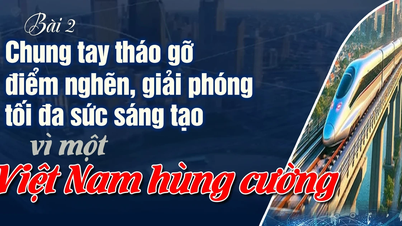



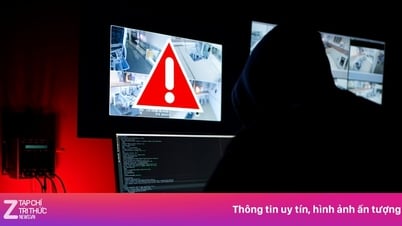

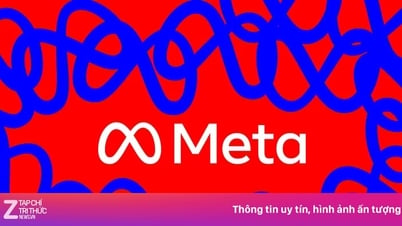








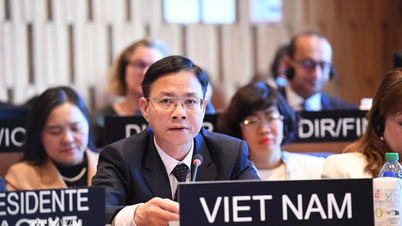
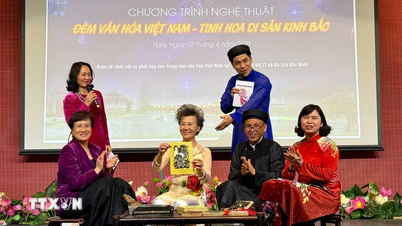

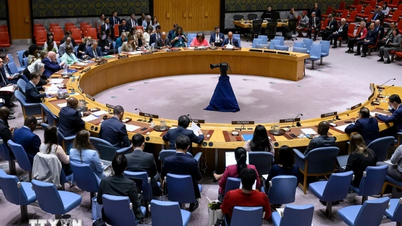
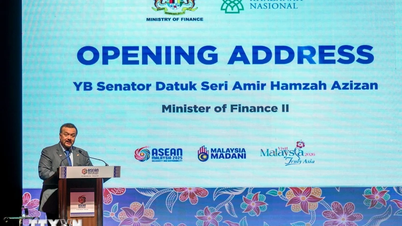
![[Photo] Prime Minister Pham Minh Chinh meets to prepare for negotiations with the United States](https://vphoto.vietnam.vn/thumb/1200x675/vietnam/resource/IMAGE/2025/4/29/76e3106b9a114f37a2905bc41df55f48)














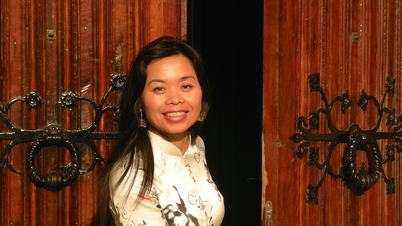


















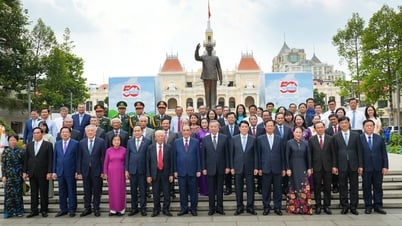














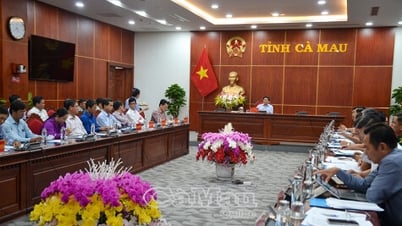




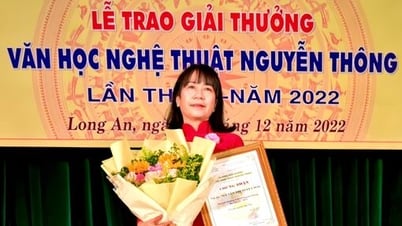












Comment (0)